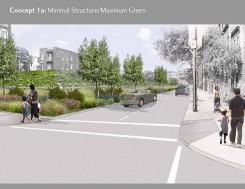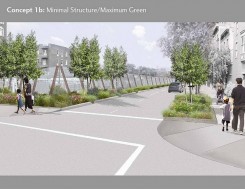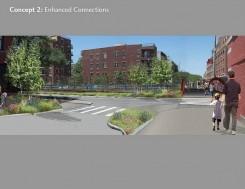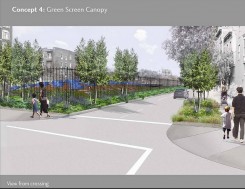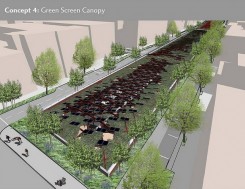Fix the Ditch: Enhancing the Brooklyn-Queens Expressway
In the 1950s, the construction of elevated and sunken highways marred many cities in the name of progress and the almighty automobile. Even brownstone Brooklyn wasn't spared. Under the heavy hand of Robert Moses, the infamous chair of the Triborough Bridge and Tunnel Authority, the Brooklyn-Queens Expressway (BQE) severed several neighborhoods in order to connect the two boroughs. Some neighborhoods fared better than others; affluent Brooklyn Heights bargained for a scenic promenade to disguise the BQE. However, their neighbors to the south along the Columbia Street waterfront, an area primarily inhabited by Italian immigrants at the time, were cut off from the picturesque portions of Carroll Gardens and Cobble Hill by a sunken, six-lane stretch of highway.
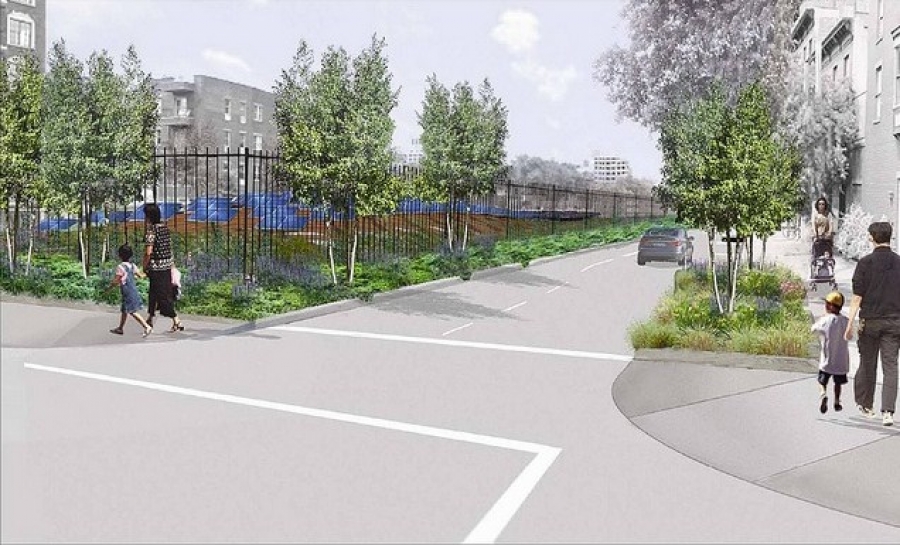 Credit: Kiss + Cathcart Architects
Credit: Kiss + Cathcart Architects
The BQE may be somewhat out of sight, but it is certainly not out of mind for residents who cross the divide everyday. Through the years, many people have offered creative and often far-fetched ideas on how to "fix the ditch." Decking it over with parks and greenways sounds appealing, and New York City Mayor Bloomberg's administration even suggested spanning it with much needed housing. A tongue-in-cheek rendering has floated around the Web that suggests filling the BQE with water like a Venetian canal. While such large-scale interventions are fun to imagine, they don't provide practical or affordable solutions for the short term. However, two recent studies suggest realistic approaches to reconnecting the urban fabric, and such mitigation may become reality within a few short years.
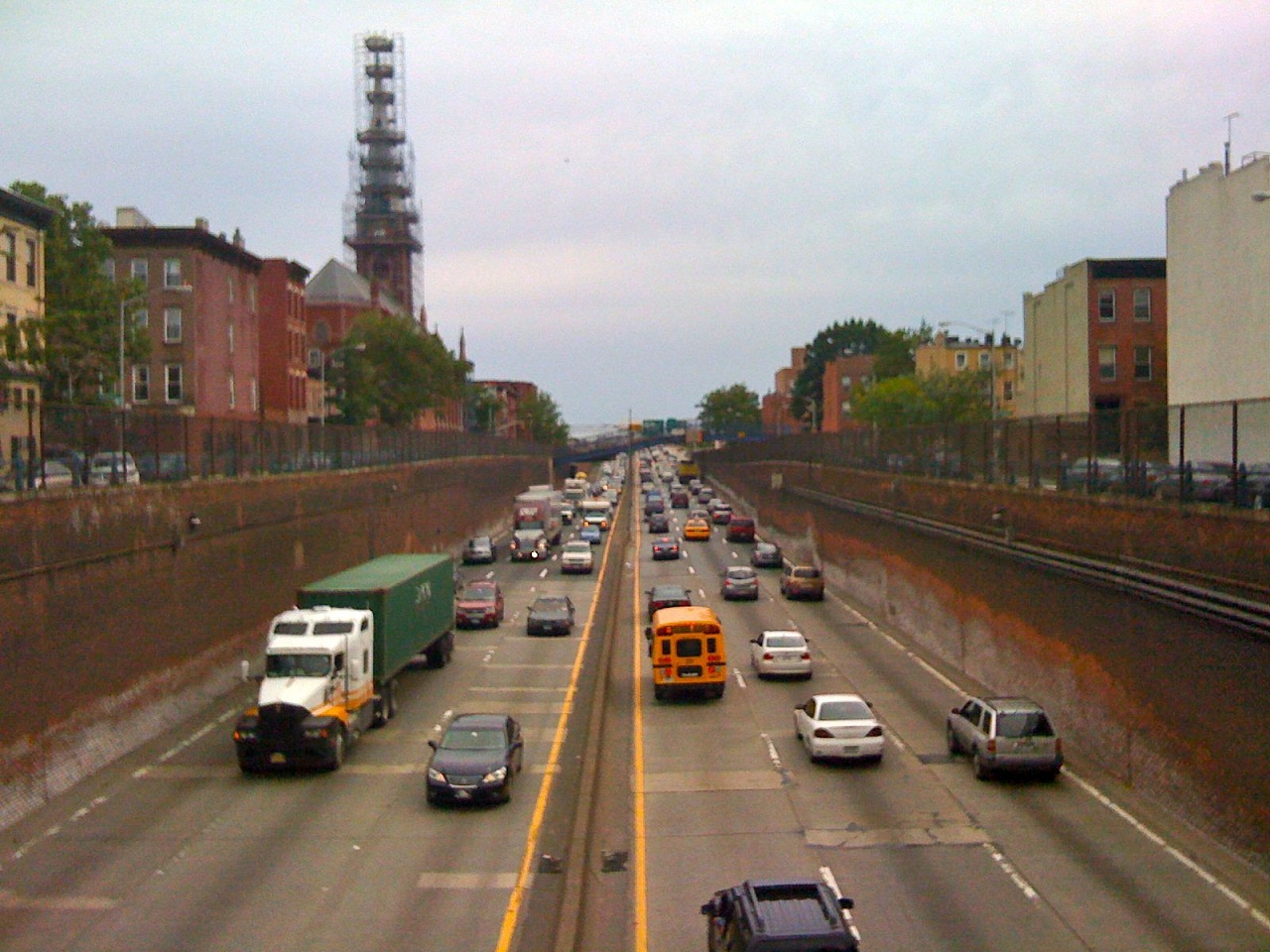
In 2005, landscape, architecture and urban design firm dlandstudio won a New York State Council on the Arts Individual Artist Grant to explore options to enhance this portion of the BQE. Titled “Reconnection Strategies: BQE Trench in Brownstone Brooklyn,” their suggestions include installing green walls on the interior of the trench as well as planting trees along Hicks Street, which flanks both sides of the BQE. "The streetscape is so vibrant in New York City that you almost expect to be entertained as you walk along," explains Associate Rebecca Hill. "If there were stepping stones of entertainment, it might draw people to the other side of the BQE." As for now, the street lacks retail and its narrow sidewalks and fast-paced traffic make even crossing it unpleasant.
Renderings and diagrams from dlandstudio's study helped Congresswoman Nydia Velázquez secure funding for the BQE Trench Enhancement Study, implemented by the New York City Economic Development Corporation (NYCEDC) with sponsor and partnering agency, the New York City Department of Transportation. They assembled a design team including Starr Whitehouse Landscape Architects and Planners and Kiss + Cathcart Architects to engage the community through a series of workshops and envision a solution that is achievable on an ambitious five to ten year timeline.
Following an initial community input session, Stephen Whitehouse, partner at Starr Whitehouse, was impressed by the "tremendous turnout and civic-minded, organized community members" of Carroll Gardens and Cobble Hill. With the communities' concerns and suggestions in mind, the design team developed several schemes that attempt to mitigate noise and pollution, improve pedestrian safety, and address aesthetic issues. Aside from the obligatory greenery, they explored traffic-calming strategies such as neckdowns, decorative crosswalks, and plantings that reduce the scale of Hicks Streets to fit the neighborhood. However, Whitehouse wonders, "Should we be focusing on the experience of crossing Hicks or making the street more commercially viable?" Undoubtedly, increased pedestrian and retail activity could benefit both sides of the BQE.
"The streetscape is so vibrant in New York City that you almost expect to be entertained as you walk along. If there were stepping stones of entertainment, it might draw people to the other side of the BQE." Rebecca Hill, Associate at dlandstudio
Noise from the BQE is number one on the list of community concerns, and not without reason. Measurements indicate that the decibel level on the BQE trench reaches 76—a dangerous number, considering that hearing loss may be occur with long-term exposure to 80 decibels. Not surprisingly, of the schemes presented at the second workshop, the one that received the most positive feedback included a plexiglas sound barrier. "One of the challenges of the project is that everyone wants noise reduction, but they have real questions about anything that comes into their field of view—people actually like the openness that the trench provides," says Whitehouse. Jessica Pavone, Assistant Vice President of the NYCEDC, emphasizes that "each concept was shown to people as a kit of parts, with possibilities to layer design solutions together." Encouragingly, the community seems more interested in comprehensive design solutions, including the potential of incorporating sustainability measures like photovoltaic panels, rather than simply covering up problems with a lot of greenery.
A third workshop, or "report back session," as Whitehouse calls it, is scheduled for the fall, at which designers and community members will discuss how to refine the preferred design as well as its implications from an urban design perspective. For now, funding has been secured only for the conceptual phase, but Pavone hopes that the momentum generated by the study will motivate potential stakeholders and push the project forward. At the very least, community members have realized that fixing the ditch is more feasible than they imagined. Sorry, Robert Moses.

Murrye Bernard
Murrye is a freelance writer based in New York City. She holds a Bachelor's degree in Architecture from the University of Arkansas and is a LEED-accredited professional. Her work has been published in Architectural Record, Eco-Structure, and Architectural Lighting, among others. She also serves as a contributing editor for the American Institute of Architects' New York Chapter publication, eOculus.
Website: www.murrye.com
